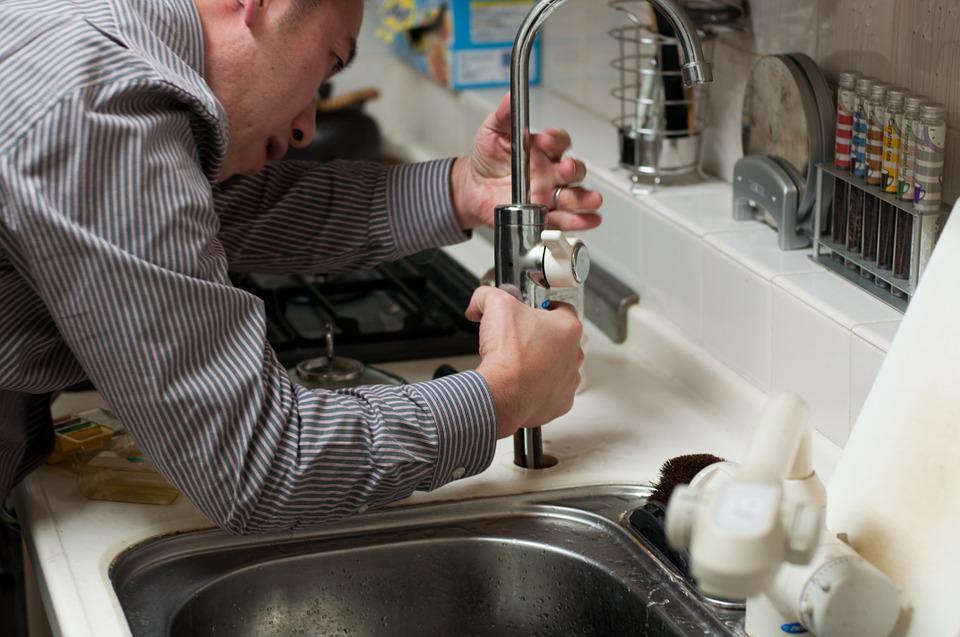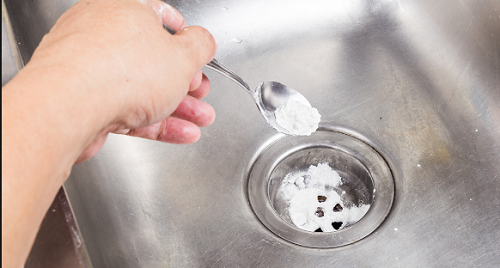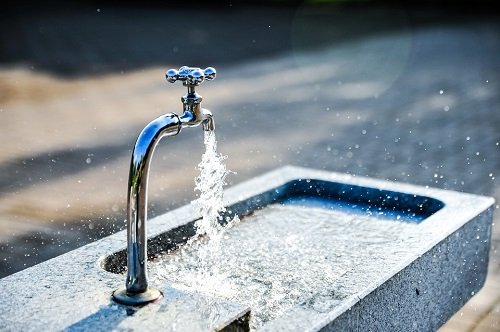Every homeowner has probably had the nasty experience of having to unclog a blocked kitchen or bathroom sink that won’t drain. The grey water might back up and get out of hand. Although the mess brought by a clogged drain is terrible and annoying, you can’t avoid it entirely. It is typically caused by built-up dirt, grease, crumbs, or hair. If you’re grappling with a clogged drain and have already tried countless home remedies, but still nothing works, maybe it’s time to step up your game plan and try Drano. But how long do you let Drano sit on your bathroom or kitchen drain before flushing it down?
A chemical drain cleaner such as Drano is a handy solution almost everyone uses to clear clogs fast. The product comprises salt, aluminum, bleach, lye, and sodium nitrate. You can use Drano cleaner to unclog showers, kitchen sinks, bathroom sinks, or even clogged tubs. It is often recommended for unclogging even the most challenging drains. However, you need to pay close attention to how long you let the chemical sit in your plumbing fixtures to avoid damaging them.
Can I Leave Drano to Sit Overnight?
Many people choose to use a product like Drano because it is easy to use and requires no special skills or training. You just need to open the bottle and pour the chemical down the drain. It can remove clogs in as little as 15 minutes. You can use Drano to clean your drains instead of calling for a professional to come and do the job for you. Drano’s official website says that it is safe to use with plastic and metal pipes.
You just have to read and follow the instructions on the bottle carefully. If you follow the instructions correctly, you shouldn’t be tempted to leave the product unattended in your sink overnight. It should take the product just about 15 minutes to work effectively, after which you should flush it down the drain.
What Happens if I Let Drano Sit Overnight?
Usually, drain cleaners are left for about 15 minutes up to half an hour before flushing it with hot water. However, some people opt to let it sit overnight for more stubborn clogs. This process also works with Drano.
If you let Drano sit on your sink overnight, the product will stay on the pipes longer. Leaving it overnight can be helpful if you have stubborn clogs accumulated in the pipes for an extended period. It gives the chemicals in the cleaner ample time to do their job. However, depending on the material that makes up your drain, leaving Drano to sit overnight might ruin it over time.

What Happens if I Forgot to Flush Drano?
Sometimes we become so busy with the demands of our busy lives that we forget the little things we have at home. So, what happens when you use chemicals to clean your pipes and forget to flush the drain? If you decided to pour some Drano on the clogged drain and didn’t even flush it down, there is no need to panic because it will not cause any harm to your pipes.
However, you may have problems if you keep using Drano on the same drain every time it gets clogged. Chemical drain cleaners can damage metal pipes when used more frequently. You may keep on using Drano to clear the same clog that you have fixed many times before, causing pipe problems.
Can I Leave Drano Max Gel Overnight?
Just like any other chemical drain cleaner that you can buy, it is advised that you wait about 15 minutes before flushing down the sink with water. If you encounter more troublesome clogs than usual, it is advised that you wait until tomorrow. Perhaps the longest you can let Drano sit is six hours before flushing the sink with warm water. It is basically like a sticky substance that sticks to clogged drains and makes them disappear.
Chemical cleaners are not safe if you use them many times on the same sink. This is because they can cause the drain pipes to soften or even break. The glue that holds the tube together may also melt. However, Drano Max Gel contains a special ingredient that protects pipes from damage.
Are Drano Products Safe for Plastic Pipes?
Yes, you can use Drano® products safely with plastic or metal pipes. Just follow the instructions on the product label.
Will Drano Products Harm My Septic System?
No, most cleaning products you use in your home or business are safe for septic systems. They help bacteria in your septic system to continue to work. Follow the package instructions for how much product you should use. You must use the right amount of Drano® Max Build-Up Remover monthly to replenish the bacteria in your septic system that help break down toilet paper and other organic matter in pipes.

Does Drano Damage Pipes?
Many homeowners love using Drano because it is convenient and effective. You can easily use this product when you have a clogged drain. All you need to do is to run the product into the clogged drain and wait for the magic to happen. You may want to grab some Drano whenever you have a clogged drain in your house. Some people are happy to have an instant solution for little problems, but doing that can sometimes cause long-term harm.
Drano will damage plastic and metal pipes only if you use it consistently. When the clog is very bad, it will become a solid and congealed mass. It may take a professional plumber to help you clear the clog. Moreover, using a lot of cleaning chemicals to clean a clogged drain can cause the product to turn into a solidified mass that will cause a blockage in the drain, and you will have to call a plumber to get the job done.
Are Drano Products Safe for Use In Garbage Disposals?
Using Drano® Max Drain Cleaner or Drano® Dual-Force® Foam Clog Remover or liquid drain cleaner on your kitchen sinks can help unclog your sinks. Yes, you can put Drano in a garbage disposal, but read the instructions carefully before doing that. Please be aware that Drano® Professional Strength Crystals Clog Remover is NOT safe to use in garbage disposals.
Does Drano Harm the Sink or Bathtub Surface?
Drano is simply a foaming agent that drenches clogged drains and will not damage surfaces if used according to label directions. The product may foam up from the drain, which is normal. Rinse the excess water down the drain to remove the foam. Let the product foam for some time, and then clear the foam by rinsing the drain with a little water.
What’s the Difference Between Drano Clog Remover and Drano Max Build-Up Remover?
Drano® Drain Clog Removers work quickly to clear clogged drains. They break down stubborn greasy and greasy residues. If you use a drain unclogger, it can quickly dissolve hair, soap scum, and other buildups in drains and toilets. If your drain is clogged with hair and other debris, use Drano® Clog Removers to help unclog it. You can also use them to unblock a clogged bathtub or shower. Please do NOT use them to unblock a toilet. If your drains are clogged, or there are other slow-running issues, you can use this product by applying it to a clogged drain and letting it work for 15 minutes. Then, flush it with hot water. For very hard clogs, wait at least 30 minutes before flushing the product.
Drano® Max Cleaner Cleaner is the most effective way to keep your drains clear. It works over a longer period of time to prevent clogged drains. Use it regularly to help keep your drains clear and keep them running smoothly. Using this product will help you keep your drains clear. Moreover, it contains helpful microorganisms that help break down stubborn food particles. Use Drano® Max Build-Up Remover regularly to clean blocked drains, toilets, and septic systems. Apply Drano® Max Build-Up Remover to a clogged drain or pipe before leaving for work. Wait for 6 to 8 hours before running warm (not hot) water down the drain or flushing a clogged toilet.
When Should You Not Use Drano?
Drano is known to be very effective at clearing clogged drains. But there are some situations where you should not use it because it can cause problems to worsen. Here are some things you should not do when using Drano:
- If you use a plunger to help you unclog a clogged drain, do not accidentally splash some of the Drano on your skin. It can cause skin irritation and cause your eyes to water badly. If you inhale toxic fumes, it can damage your lungs.
- Do not mix Drano with any other cleaning product or cleaner because you will never know what will happen. If you try to use another chemical with Drano, such as bleach, you will produce toxic fumes. This can cause serious eye irritation and difficulty breathing. Chemical fumes caused by oxidizing chemical products can cause eye irritation and difficulty breathing.
- It is dangerous to use Drano to treat corroded pipes. Drano will soften or cause them to burst or harm pipes by damaging the glue that holds them together. Repairing your pipes will be more expensive because it will affect their chemical composition.
- The manufacturers of Drano say that it should not be used in toilets because there is a different trap mechanism for the product in toilets than the one in sinks. Traps in toilets prevent the product from reaching the problem area. It may cause porcelain toilet bowls to crack or cause plastic pipes to melt and cause water to pool.
There are many differences between how toilet drains work and how kitchen or bathroom sinks work. Drano is a chemical that is designed to reach hard-to-reach places in pipes, like those that form under a sink. It is made to dissolve hard-to-reach clogs that form in the pipes. Toilets have different drains because they are made differently. Drano cannot reach the problem areas in the toilets.
Drano’s chemical makeup helps to dissolve clogs because of its strong oxidizing properties. The process of oxidizing causes a lot of heat. If you use Drano in a toilet, it may cause the pipe or the porcelain that holds up the bowl to crack or melt.
If you have a clog in your kitchen sink or bathroom sink, do not use the sink immediately. You should wait at least 24 hours to drain the clogs that you have gotten from using the drain cleaner. It can dissolve almost any kind of material, so be careful when handling it.
Wrapping Up
If you cannot clear the clogs yourself by using a chemical cleaner, it is probably best that you call a licensed plumber. However, there are some easy fixes that you can try at home. You can try putting about half a cup of baking soda in your drain. After pouring the baking soda into the sink, you can add one cup of vinegar. You will see the baking soda and vinegar spark off after a short time, and you can leave it for as long as 30 minutes. Flush your sink with warm water and see if that clears the clog completely.
Chemical cleaners can cause pipes to burst or fail. You may think that Drano is a fast-fix solution, but it will not solve your problem for a long time. It doesn’t matter how minor your clogging problem is; it’s best to hire a professional to deal with it. If your drains keep clogging with a persistent clog, it is recommended that you hire a drain cleaning professional. They have the right equipment to check out your drains thoroughly and find out what is causing your problems. If you must use Drano, ensure it’s a one-time fix and not a regular unclogging solution.

Judy Battista is an interior designer who holds a bachelor’s degree in interior design from Cornell University — Ithaca, NY. Her passion for home improvement and interior design has contributed to her extensive knowledge of everything bathroom remodeling and general interior design. Judy often publishes home décor articles on several websites, including Sprucetoilets.com, Sprucebathroom.com, and Mybesuitedhome.com. She also contributes to various interior design magazines. As a skilled interior designer, Judy Battista is well versed in computer-aided design (CAD) and other technologies used in the interior design space.
